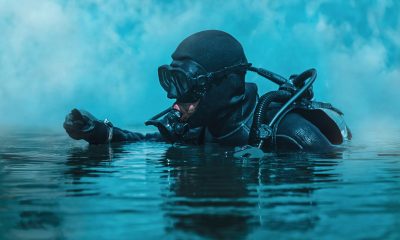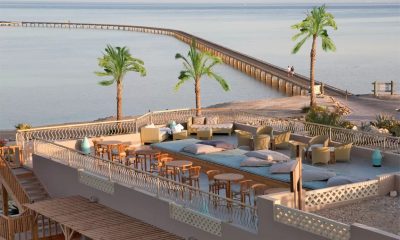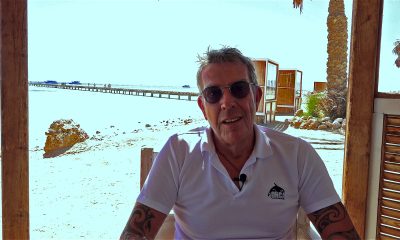Travel Stories
Red Sea Wrecks and Reefs
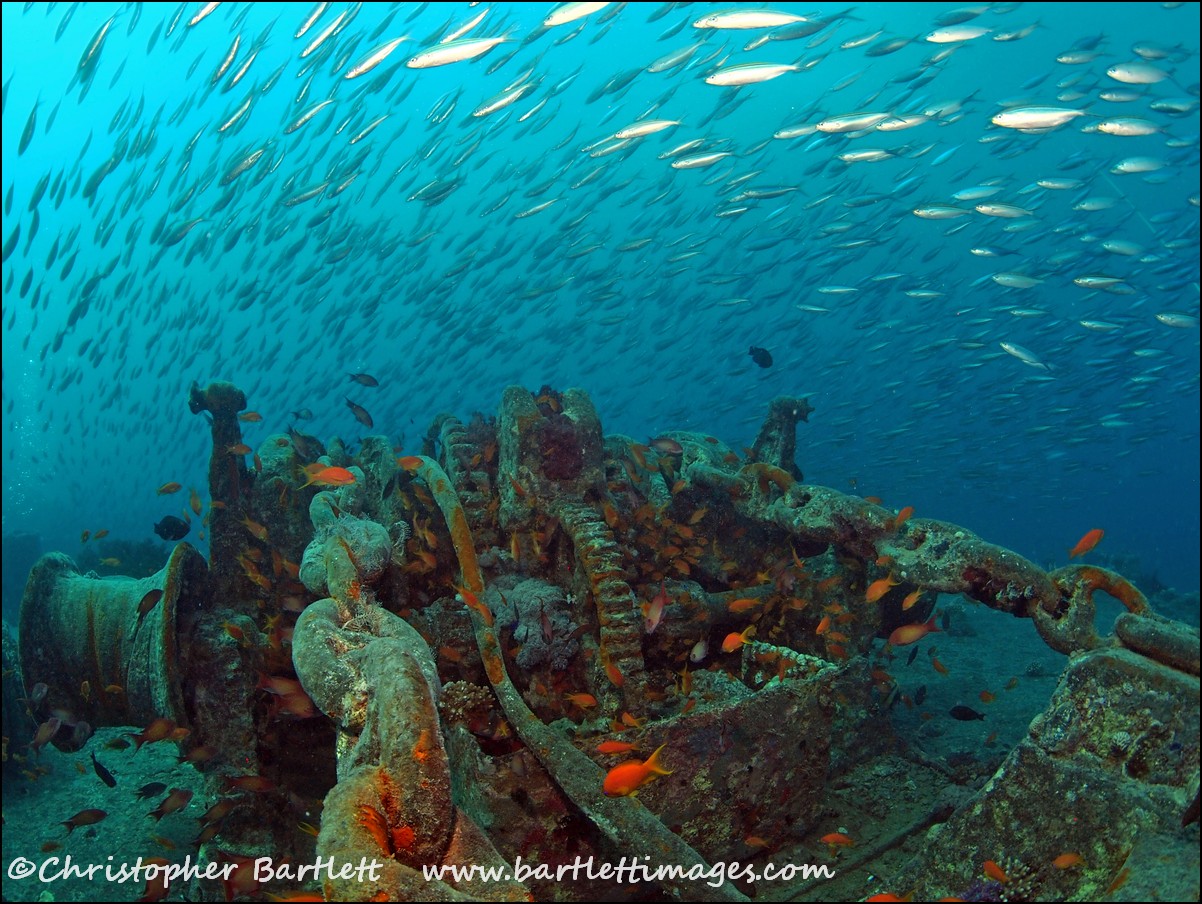
My eyes were as wide as saucers, but it was only partly due to the dim light inside the hold. The Thistlegorm was every bit as good as her reputation, and then some. To boot, my buddy and I were the only ones in her, despite hosting over 60,000 dives a year. We swam a circuit round the hold, going over British WW2 Enfield motorcycles, past a truck and a jeep, aircraft engine cowlings, and round the chassis of a car, its radiator remarkably whole. Something stirred in the gloom and my torch beam picked out a large green turtle. As we came out of the hold by the locomotive water tanker sitting on the port side of the deck, the rest of my shipmates were descending the anchor line to the midships.
Discovered during one of Jacques-Yves Cousteau’s first expeditions aboard the Calypso during early months of 1956, the 375-foot S.S.Thistlegorm was bombed and sunk by the Luftwaffe on the night of October 5th 1941. The ill-fated vessel’s midships were blown open when the bombs struck the ammunition hold exposing Bren gun carriers, rifles, and artillery shells. She sank with her cargo full of war supplies, taking the lives of nine sailors with her. Lying to the North West of Ras Mohamed at a depth of 17 – 35metres the SS Thistlegorm has become one of the most sought after wreck dives in the entire world.
After leaving the holds, we finned with the gentle current to take in the stern and the coral encrusted artillery and anti-aircraft guns mounted to the rear. She was a real beauty with many treasures to discover. I managed to dive her three more times in the following 16 hours. After a very eerie night dive into the hold punctuated by watching another group of divers put on a light show Jean-Michel Jarre would have been proud of, I hit my cabin early so as to hit the water at sunrise, a cunning plan to get her alone with my buddy again.
The light was incredible and the current slack, allowing us to move 25 yards off to port to check out one of the two locomotives blown off the deck in the explosion. One lies to each side, and when the current is pumping it’s hard to get to either of them. At sunrise the port side loco looks particularly cool, and must be one of a very few underwater train wrecks. When the current picks up with the tide, as it did on the last dive, the bows around the anchor winch are buzzing with schooling fish swarming back and forth.
[wppa type=”slideonlyf” album=”25″ align=”center”][/wppa]
Operated by the Red Sea Diving College, VIP One is a 16-berth, purposed built, luxury motor yacht which has been crafted and built by lovers of the Red Sea. Drawing on twenty years’ of Red Sea expertise, VIP One has been designed to offer the best in both comfort and safety for both open circuit and rebreather divers. On my trip there were four rebreather divers who were assigned their own CCR guide (all the guides are at least instructors).
Air conditioned and spacious throughout, the interior boasts large double cabins with private bathrooms, a generous saloon and dining room and a fully stocked bar area. Externally you will find sizeable sundecks on a number of levels perfect for sunbathing, reading or even an on-deck barbecue and a top deck bar offers a perfect location for enjoying the Sinai’s spectacular sunsets.
Before embarking on the VIP One three days previously, I wasn’t much of a wreckhead. I did have a penchant for WW2 plane wrecks from Papua New Guinea, but I’d always rated corals and fish over metal hulks. Three days on and my horizons had been widened. We’d warmed up to the Thistlegorm by visiting a series of wrecks on the other side of the Straits of Gubal at Abu Nuhas reef, which has claimed at least four vessels. The first two days’ diving were spent diving the splendid wrecks of the Giannis D, the Carnatic, the Chrisoula K, the Kimon M, and the Kingston. Then we crossed back over the straits to arrive on the Thistlegorm just as everyone else had left their moorings and get in two afternoon dives and a night dive on one of the most interesting wrecks in the world.
But let’s go back to the start. The Giannis D, a 300-foot Greek cargo ship that sank in 1983, was a spectacular start. He stern is arguably one of the most photogenic anywhere. The viz wasn’t as good as ideally necessary for a noise-free image, but she was still a stunner with soft great soft corals and a bridge full of glassfish. The Chrisoula K is another Greek freighter from the early ‘80s with easy access to the bridge, another sexy stern and resident batfish.
The P&O steam sailer SS Carnatic sank in 1879 and has almost become a reef in itself, starting at just 12 feet depth at the bows. Access to the holds is easy and open, with more soft corals, glassfish, lionfish and anemones. After a great dive on this iconic site, my buddy and I were the last ones to surface with Hooch, our guide, and were zipping back to the boat in the RIB when its helmsman Mohammed simultaneously swang hard over to port and yelled “dolphins”. “Snorkel gear on fellas” was the order from Hooch, and in we went. It was hard to resist freediving down to play with them, but luckily a few clumsy rolls and spins at two metres was enough to get them to play. There were close to a dozen, with two youngsters sticking close to their mums, and a playful adult who dived down to the reef and came up to Hooch balancing a stick of dead coral on its nose. Splendid.
The Kimon M is also nearby. Lying on her starboard side, she has an excellent swim-through down most of her length, and pink, white and orange soft corals decorate her superstructure, making her a treat for wide angle and fisheye lens. Small schools of batfish hang around her too.
Ras Mohamed and Tiran Straits
After such a wreckfest, we cruised from the Thistlegorm back to Ras Mohammed, home to some world-renowned dives sites, such as Jackfish alley, Shark Reef, and the wreck of the Yolanda.
We arrived mid-afternoon, just as the last of the day boats from Sharm-el-Sheikh moved off, leaving us and one other liveaboard alone. Day boat operators from Naama Bay tend to depart from and return to the Naama Bay jetty at the same time, meaning that there can be a high number of day boats on the most popular sites in Ras Mohamed (Shark Reef, Yolanda, Anemone City, Shark Observatory, etc.) and Tiran (Jackson reef especially). Liveaboards are allowed to overnight in Ras Mohamed Marine Park, meaning that you can dive the best sites before the daily boats arrive around 09:30 and after they leave at 16:00. It is not uncommon to be the only group on the best sites, even in July.
Between June and August large schools of snapper and barracuda hang around in the blue just off Shark Reef and have given it a reputation as being one of the best dive sites in the world. It did not disappoint, delivering a large school of both and a friendly Napoleon wrasse, two turtles, and a giant moray. There are fans and some swim-throughs, hard and soft corals. At sites like Temple and Fiesta, it is wise to keep an eye on the blue for mantas and whale sharks.
After another early morning extravaganza, we’d just finished breakfast and cast off when the flotilla from Sharm started to arrive. In an hour it would be diver soup. Not for us though, as we cruised to the straits of Tiran and Gordon reef for a post-lunch, late afternoon, and night dive. The Tiran Strait reefs of Gordon, Thomas, Woodhouse and Jackson have good hard and soft coral coverage, plenty of fish, and more fans. Jackson reef can be like swimming in fish soup on occasions, but its popularity also makes it a day boat magnet. An early morning blue dive off the back of Jackson yielded a distant glimpse of eight scalloped hammerheads, and a diver-free exploration of its gorgonian and fish-covered tip to end a fantastic week.
Need to Know:
When to Go: VIP One operates year-round. The schooling snapper and barracuda come to breed in June and July, but the big stuff like mantas, whale sharks, and scalloped hammerheads can be found, with a bit of luck, anytime.
Dive Conditions: Water temp: ranging from 21C in January to 29C in August
Viz: Often 90 feet +
Book through www.indogosafaris.com
Price: 930 euros (based on two sharing an en-suite cabin) including free Nitrox, excluding flights.
Blogs
Dive Indonesia Part 3: Dive into Lembeh Trip Report
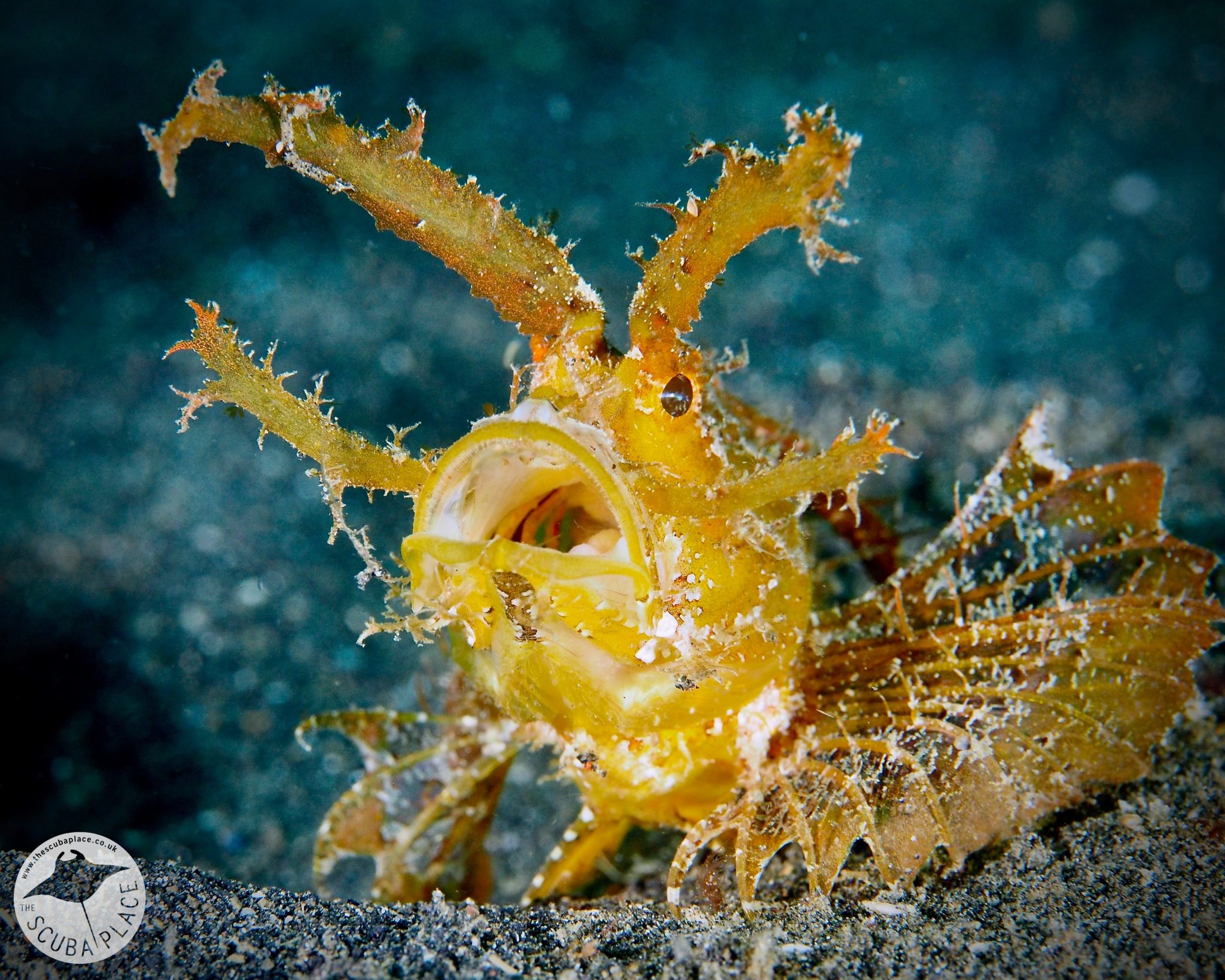
In January The Scuba Place visited Ambon, Raja Ampat and Lembeh hosting a group of friends and divers, and what a blast they had! They stayed at some amazing spots and saw some amazing things! This is their trip report on their third and final stop in Lembeh.
There are well-known diving destinations, and then there are places that have a reputation on a level all on their own. For critters and all things small, weird, and wonderful, there is no place better known than Lembeh.
Lembeh is a small island sitting off the north-eastern coast of Sulawesi, accessed by Manado Airport, then an hour’s drive. Getting to Manado is easy –flights from Jakarta, a major international hub, are direct to Manado and Garuda Indonesia airline gives divers 20kgs of checked baggage plus another 23kgs for scuba equipment, free of charge! What could be better than that?!
Arriving in Manado is civilised – this is a sizeable airport and well-organised. Our baggage came out promptly, and we were met by our resorts’ drivers, popped into lovely, air-conditioned SUVs, and off we set on our journey to Dive into Lembeh. The first 30 minutes or so of the journey was on the new main road to Bitung – after having navigated the local traffic surrounding the airport of course. Then, we were in the hills and the rural landscape replaced the city buildings.
Passing through the final village, Kasawari, you soon arrive at the resort where a warm greeting from the staff, bearing cold flannels and a tropical punch, awaits! While we sat and chatted and drank our much-needed cold punch, our bags were swept away. We were then escorted to our rooms, and WOW! – they were beautiful!
The rooms are in three categories – Long House, Sea View Bungalows, or a larger Suite. The Long House is exactly that – a terrace of three rooms in one building and is set back in the gardens. The Long House rooms are twins or doubles and have a shared deck with views toward the sea. The Suite is an oversized room with a bedroom and lounge area and a huge open-air shower room.
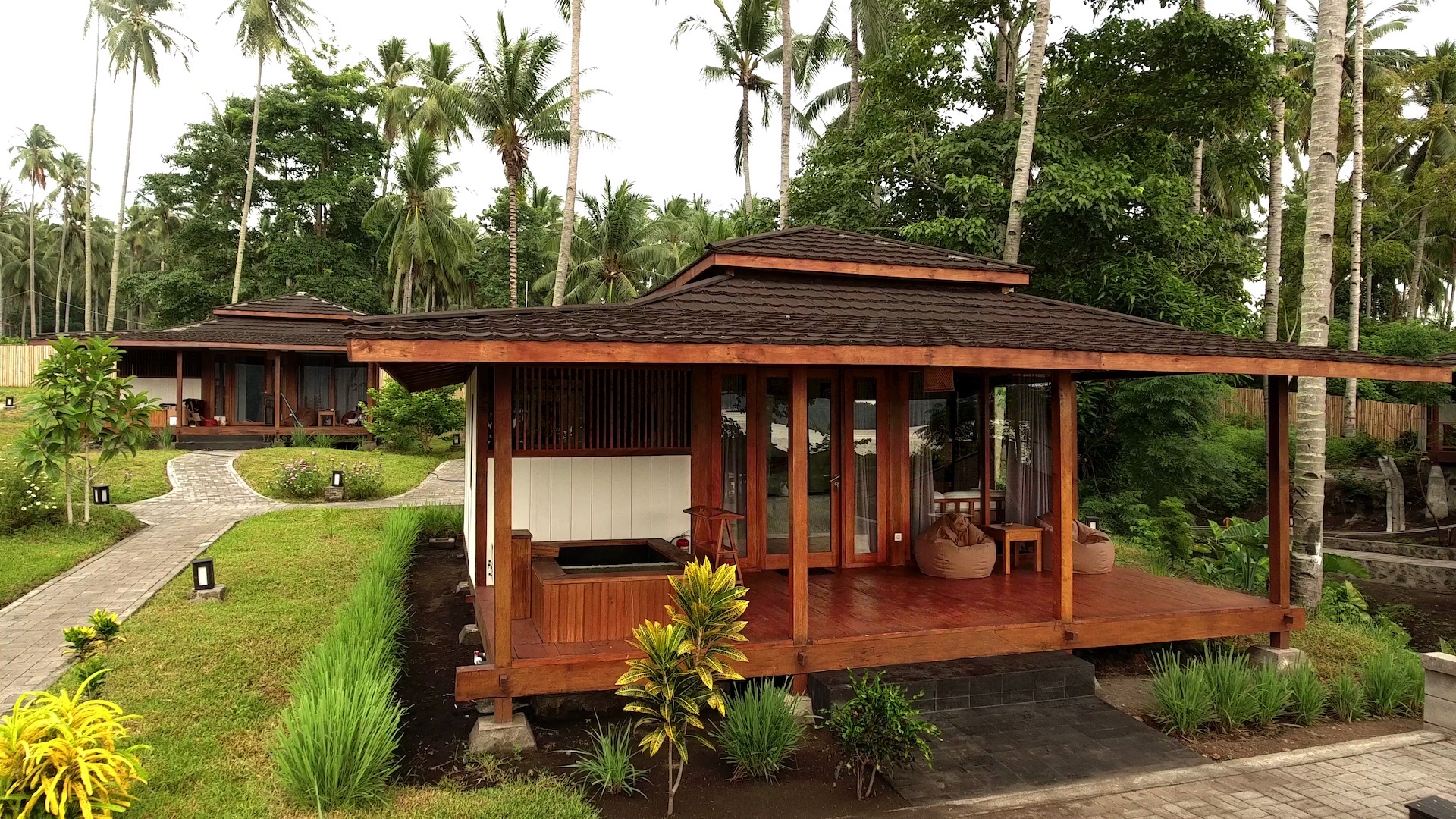
We stayed in a Sea View Bungalow. They are at the front of the resort and overlook the water and a few are in front of the beautiful swimming pool too. Each bungalow has a canopy bed (king or twin configuration), a neat storage area with wardrobes and shelving, a day bed for extra storage or a third occupant, and a huge desk with power points with a stocked mini fridge below. There is also an indoor/outdoor bathroom with a walk-in shower.
The rooms are beautifully finished – authentic wood floors, walls, and woven ceilings and all the bungalows and the suite have their own deck to the front with table and chairs, plus the real surprise – a lovely Japanese-style style hot tub. This is, and trust us, the perfect place to sit with a cold beer after a full day of diving!
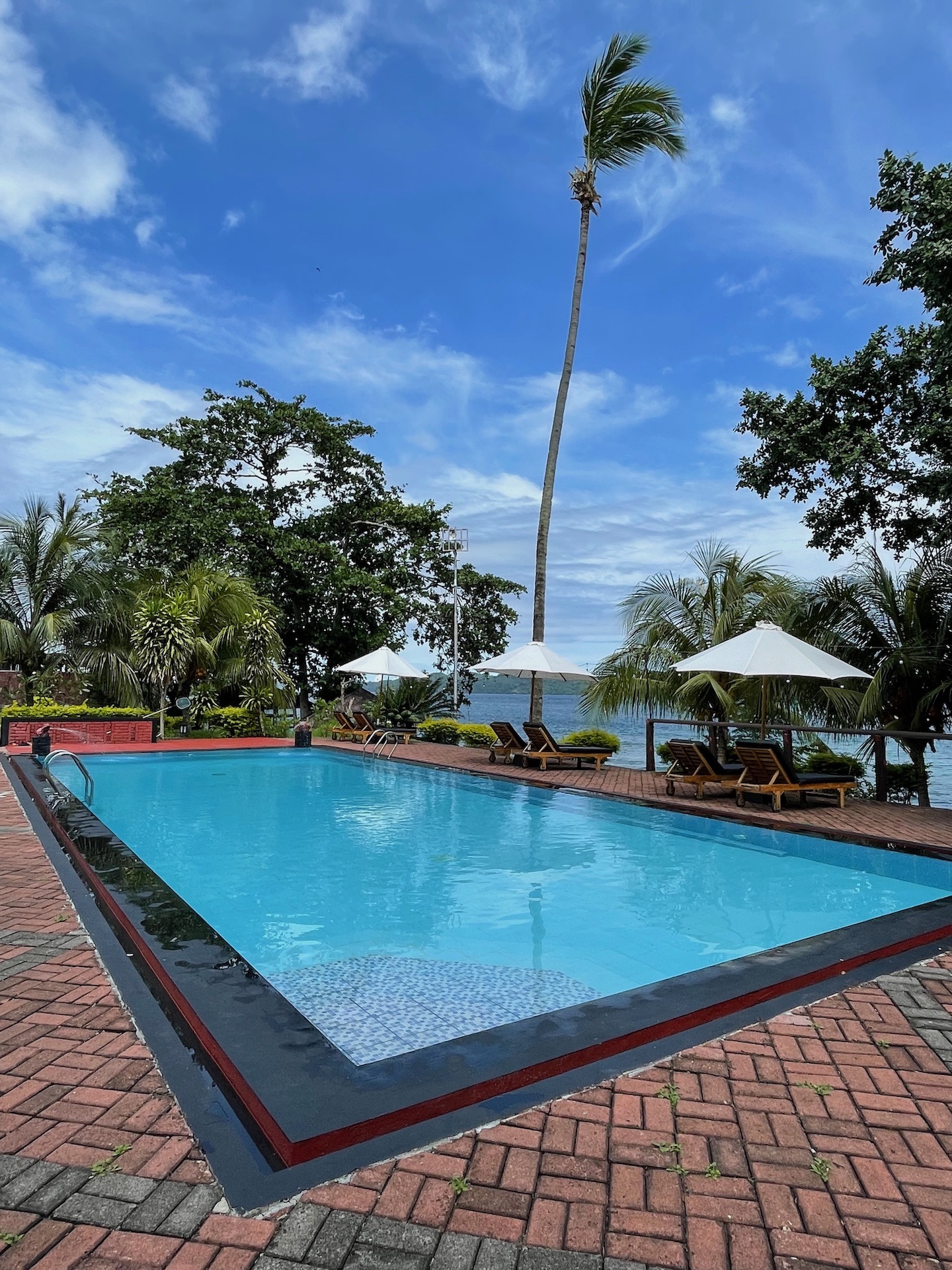
The swimming pool is beautiful, and the terraces surrounding it look directly over the strait to the island. If you get any downtime, this is the place to be! Or there is always the bar! The bar is in the central building together with a comfortable lounge area and of course the restaurant. Cold beers are plenty, but let the expert barman make you a cocktail – the Lembeh Mojito was superb! Imagine a normal mojito and add fresh lemon grass, fresh ginger, and chilli peppers … amazing!
This leads nicely into the food. – a very important part of any dive trip! There is, simply put, loads of it, and it is delicious!
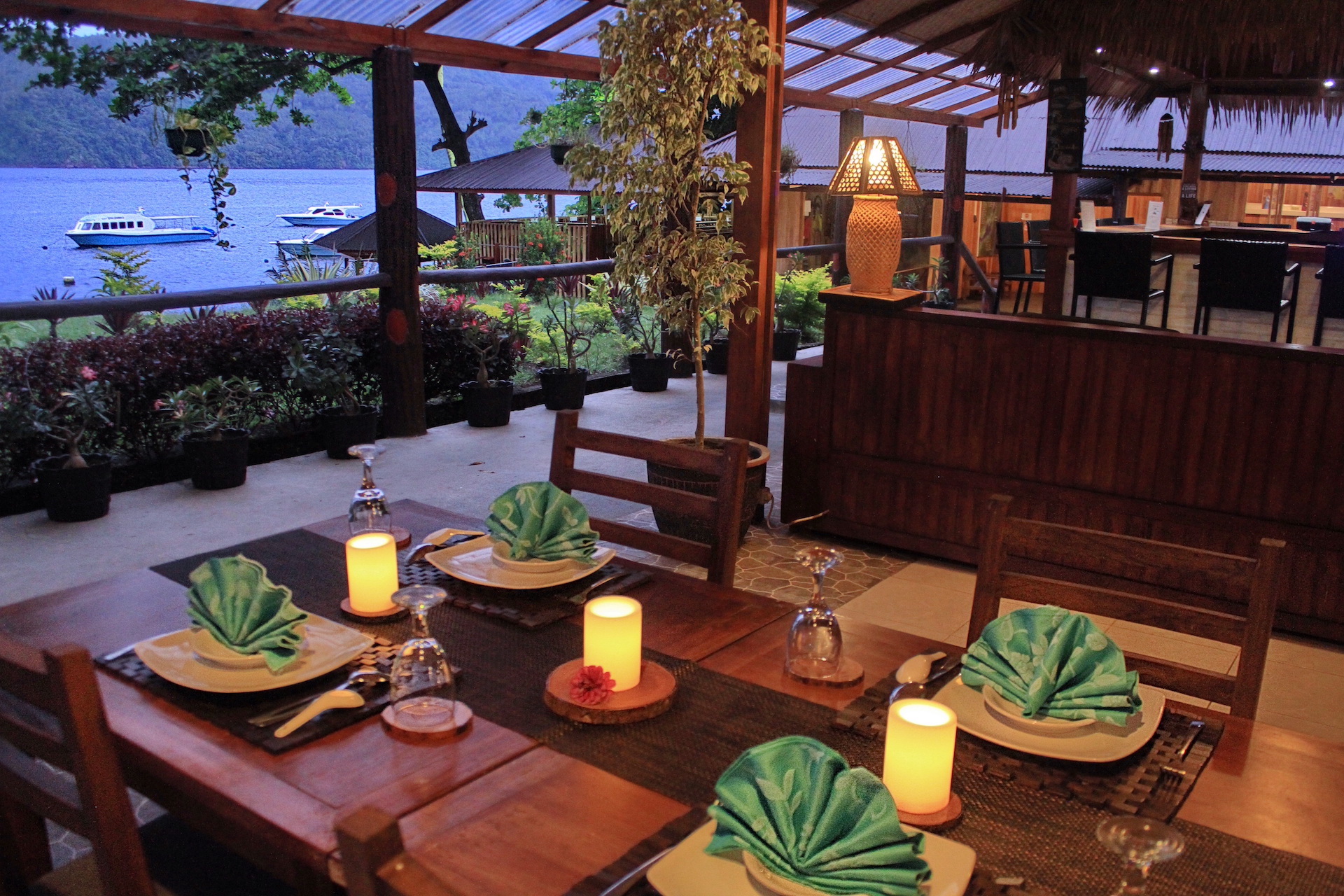
The first breakfast is toast and cereals, juice, and hot drinks. This is available all day every day! The second breakfast is served after the first morning dive, and this is an awesome meal. A good blend of Western and Indonesian offerings, with eggs cooked to order. Manado porridge, a local dish of savoury oats was delicious, and supported by nasi goreng, mi goreng, rice noodles, waffles, pancakes, and good old bacon. Everything was cooked beautifully, and we were spoilt! Fresh fruit was plentiful and with numerous lime, mango and soursop trees on the property, getting your 5-a-day was easy!
Lunch started with the most amazing soups freshly made each day. Three or four main meal selections were served with rice, noodles, potatoes, and tofu – the choice was amazing and the food delicious. Dessert would be fruit at lunchtime and a more substantial offering, normally with ice cream, at dinner, following another amazing main meal!
The chefs are genius – the food is exceptional, and of course, supplied with a choice of hot sambals and chilli relishes ranging from the tongue tingling to the head-melting inferno versions only for the brave (or daft!). The highlight of our week was a hog roast – served with all the trimmings. We had guests with dietary requirements and vegetarian preferences in our group, and they were well catered-to.
After our afternoon dive, we were greeted at the dive centre with hot ginger and lemon grass tea or hot chocolate alongside donuts, cakes, or biscuits. Eat, sleep, dive, and repeat – it is a real way of life here!
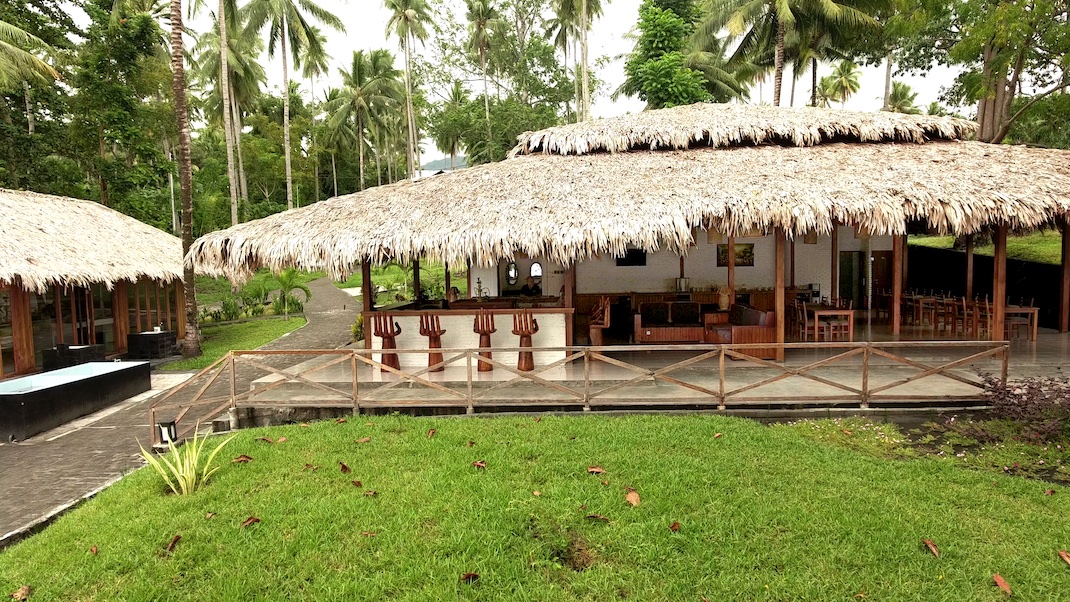
The lounge and bar area are also a venue for some presentations. Our dive guide, Agust, studied marine biology at university and is a bit of a nudibranch specialist. He delivered a great 40-minute presentation on his favourite subject. And then Ben, the dive boss and professional photographer of international standing, gave an inspirational talk on creative lighting using torches. A few of our gang ditched their strobes and tried out some of the techniques Ben taught us with some exceptional results!
The camera room has rinse tanks and airguns outside, with personal cubby spaces and plenty of power points, towels, and storage – the perfect setup for underwater photographers and videographers. Between dives, you do what you need to your camera, and then pop it into a basket back in the rinse tank and it is automatically taken to the boat in time for your next dive.
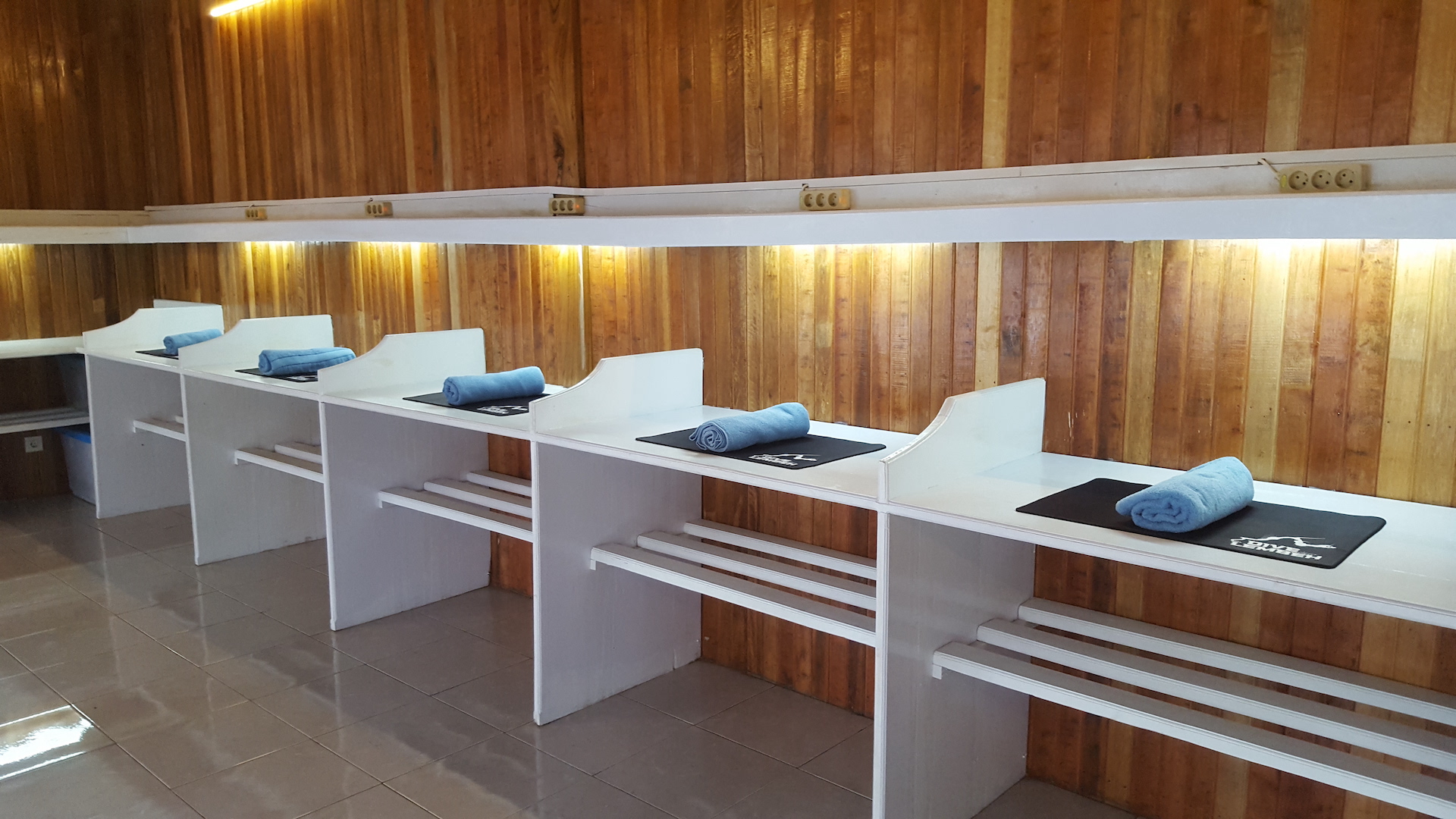
The dive centre is as close to the water as you can get and provides each diver with space for a gear basket and plenty of hanging space. There are rinse tanks right next to the kit room, showers, drying racks, and plenty of benches for pulling on those wetsuits and boots. Your BCD awaits you on the boat, so absolutely no humping of kit anywhere!
The diving – at last, I hear you say! Sorry not sorry – the resort is amazing, and it needed to be said! Packages at Dive into Lembeh can be based on two dives a day or three. We say book the three-dive package – you will want to do every possible dive there is, and it is a little cheaper to book in advance than it is to pay for extra dives in resort. Nitrox is available in the resort ($7 per fill or $20 per day) and guided night dives are $35. Spend a few pennies and do a night dive! Octopus, bobbit worms, moon head sea slug, nebulose moon snail, stargazers, frogfish…we saw so much!!
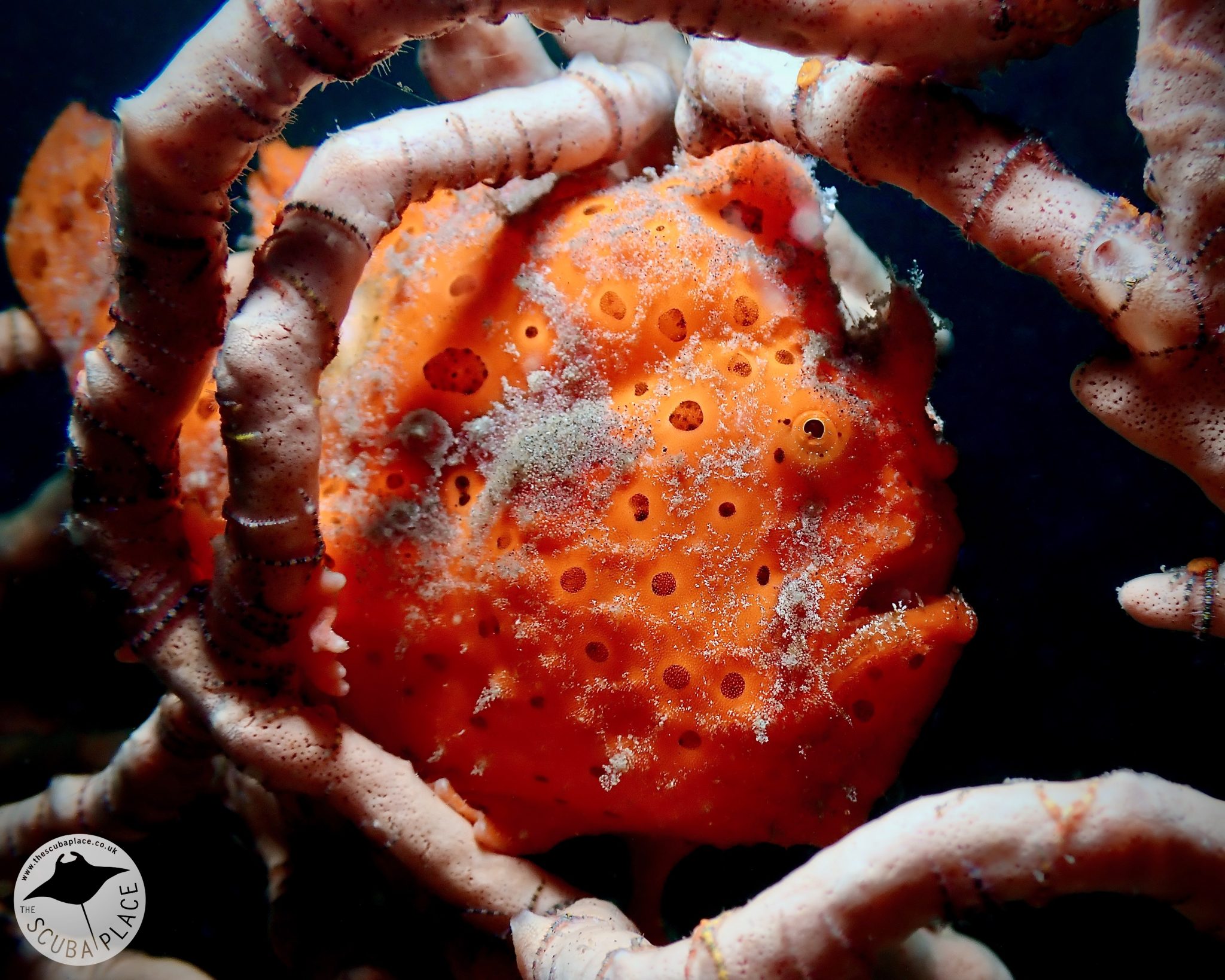
07:30 is dive one, 10:30 the next, and then the third is at 230pm. The house reef is open all day in daylight hours too and is well worth a dive or three! From the boat, you drop in on muck, black sand, or a sloping seabed with coral bommies and then get your eyes into focus…. there is so much to see.
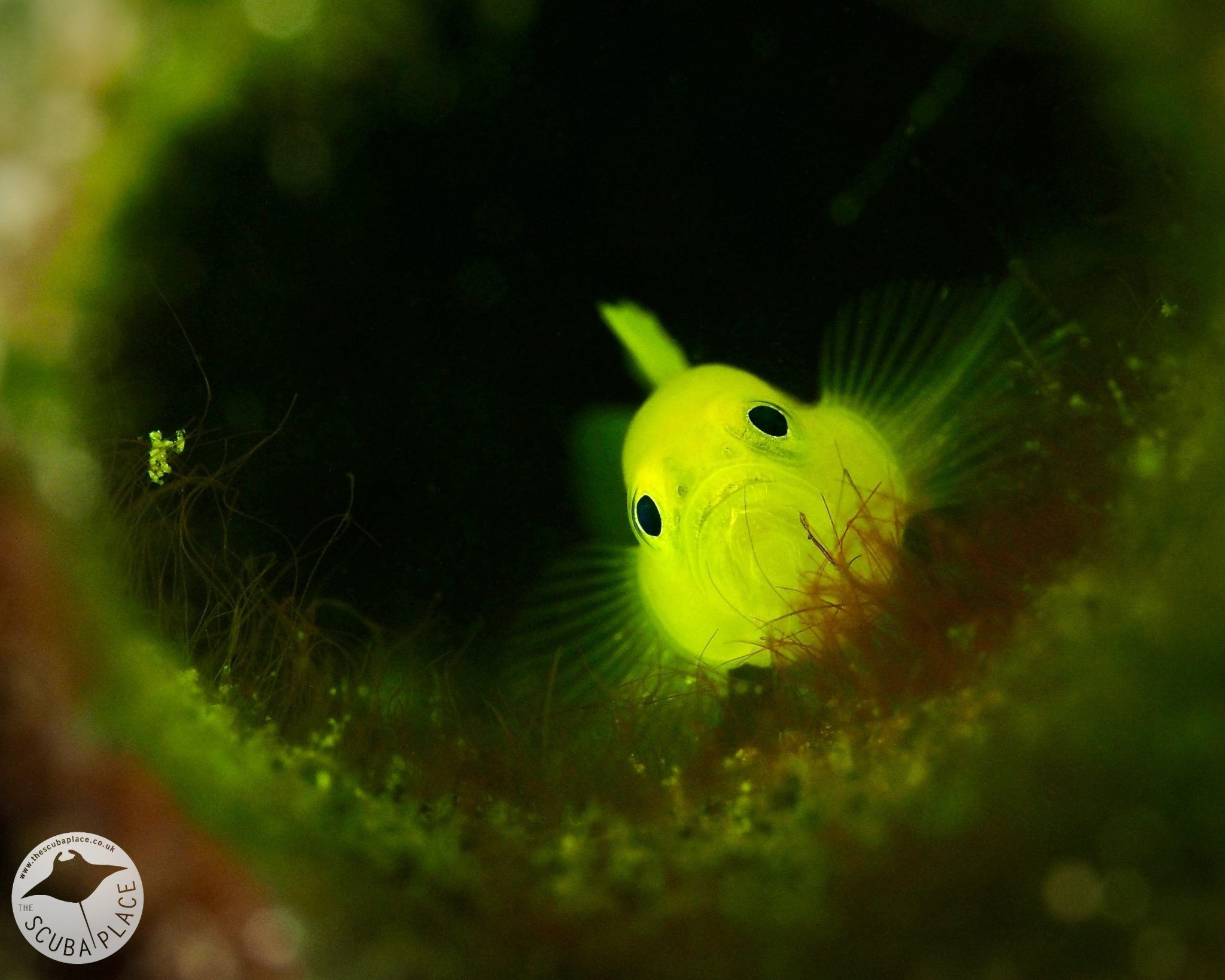
Lembeh is famous for critters – all things weird and wonderful and is well known for frogfish and various species of octopi. Every dive captures the simply amazing nature of the Lembeh Strait. We saw hairy, striated, painted, and warty frogfish of all shapes and sizes – from the smallest imaginable to the pretty huge.
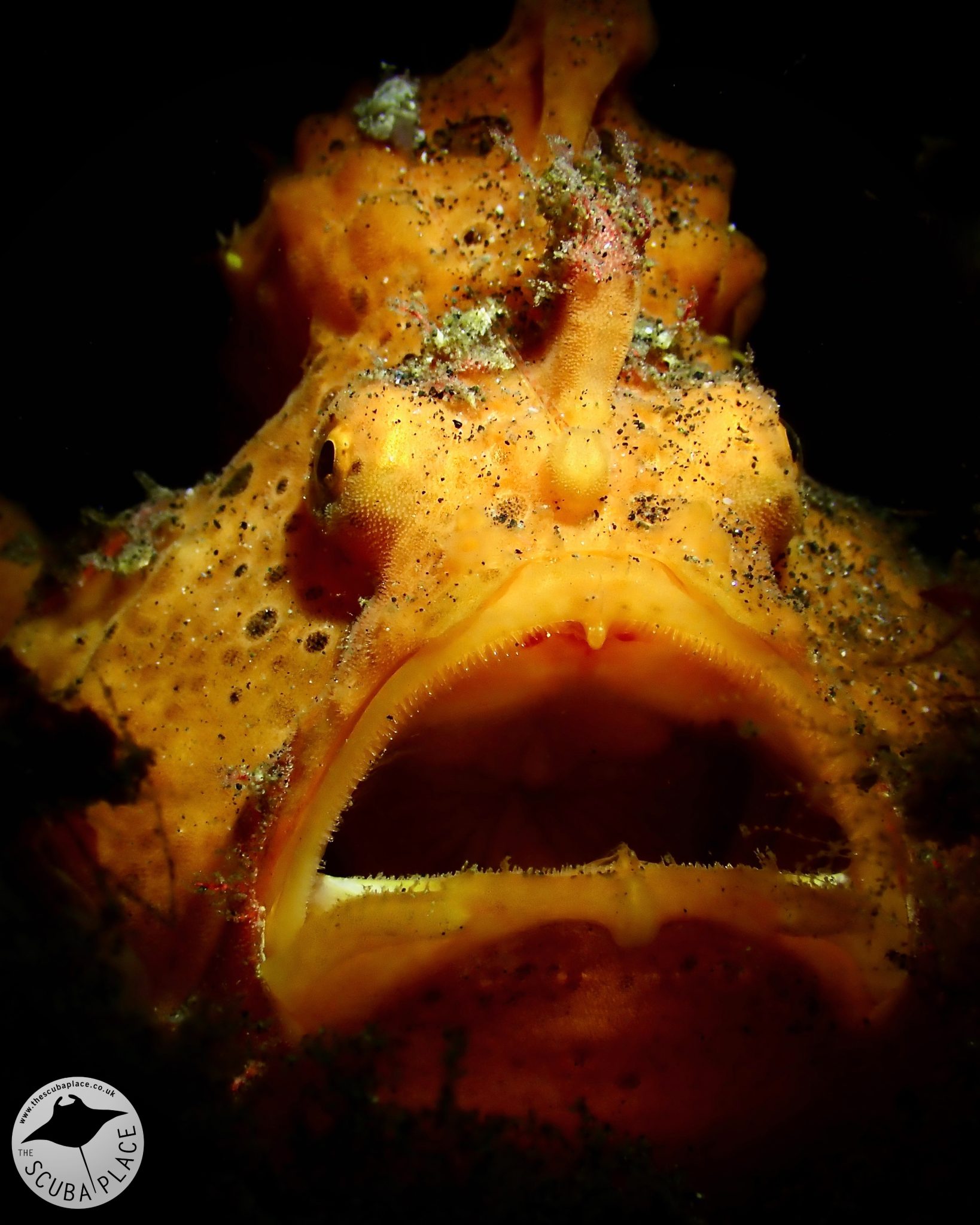
We encountered mimic, wonderpus, reef, long-armed, blue-ringed, and coconut octopus. There are shrimps of every variety – emperor, Coleman, hairy, skeleton, harlequin, and tiger!
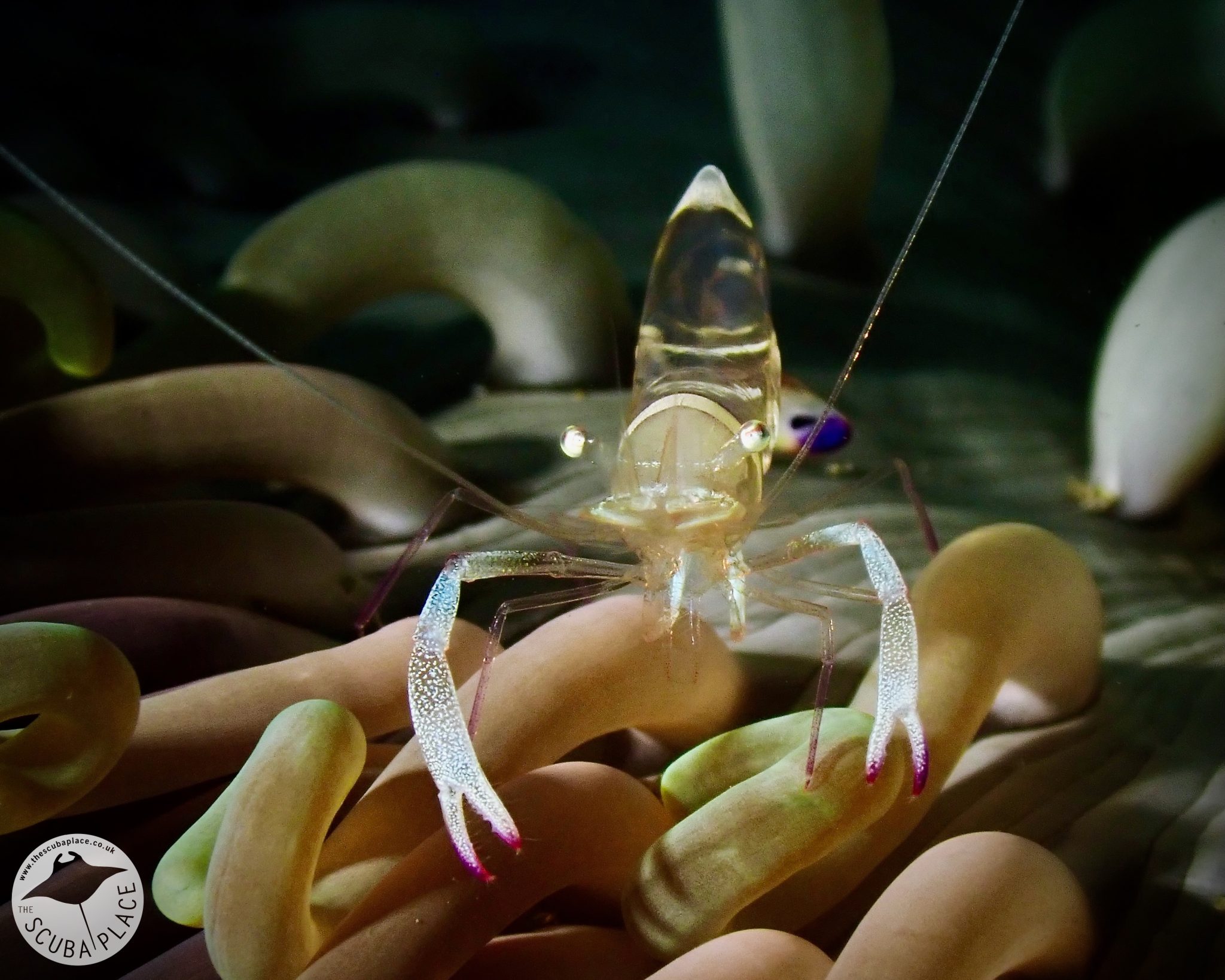
And crabs – porcelain, pom-pom, candy, and squat lobsters galore, including the amazing purple hairy ones you can find on barrel coral! We found scorpion fish, sea moths, Ambon scorpionfish, flathead and crocodile snake eels out hunting. And then nudis – hundreds of them! And seahorses and pygmy seahorses and and and and! The list is endless, and we will let our galleries do the talking, but it is safe to say that Lembeh delivered – in buckets!
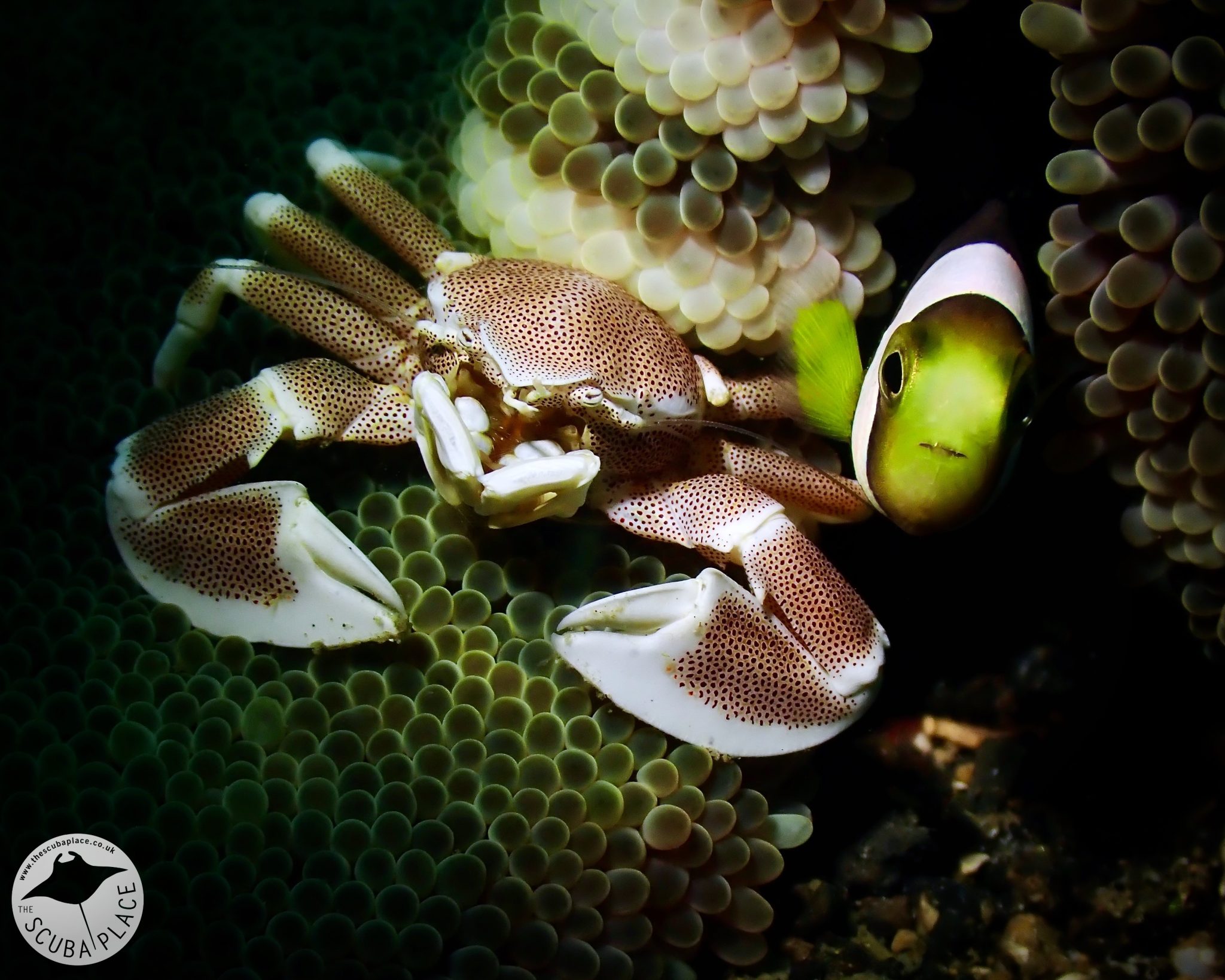
The best dive? Getting to spend 45 minutes watching a coconut octopus decide on a new ‘house’ – a bigger and better shell than it was in, and watching it move from one to the other, and then disposing of the old shell by carrying it away from its territory! Just magical.
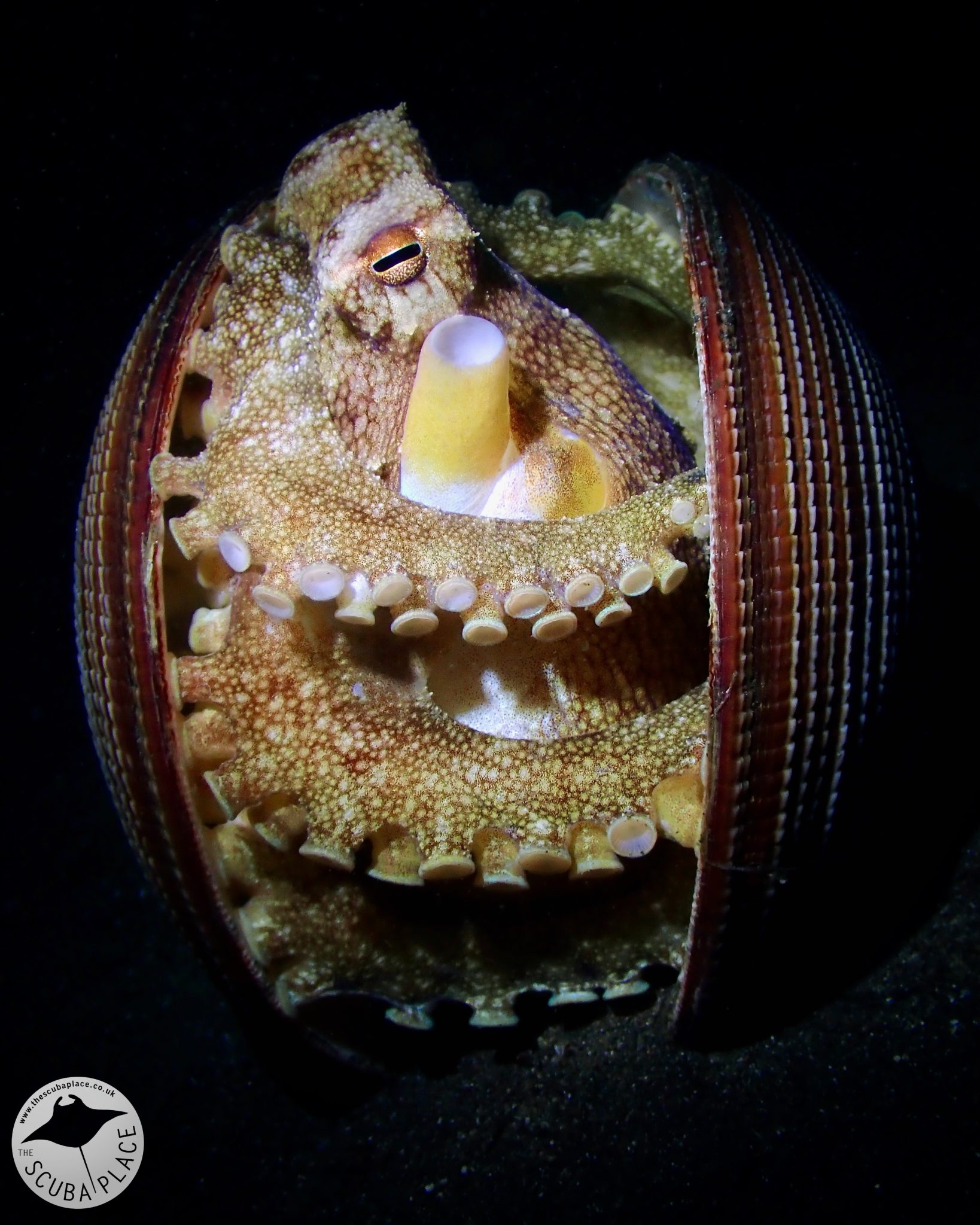
Our guides were exceptional and stayed with us from the beginning of the week to the very end, getting to know our diving styles and preferences and photography skills. Many of the guides have some experience with underwater photography and were happy to hold torches and make suggestions – underwater!! They tried their very best to deliver our bucket list and did so for one diver when they found a harlequin shrimp on our last dive! We were lucky to have one guide for every two divers and we are now ruined forever!
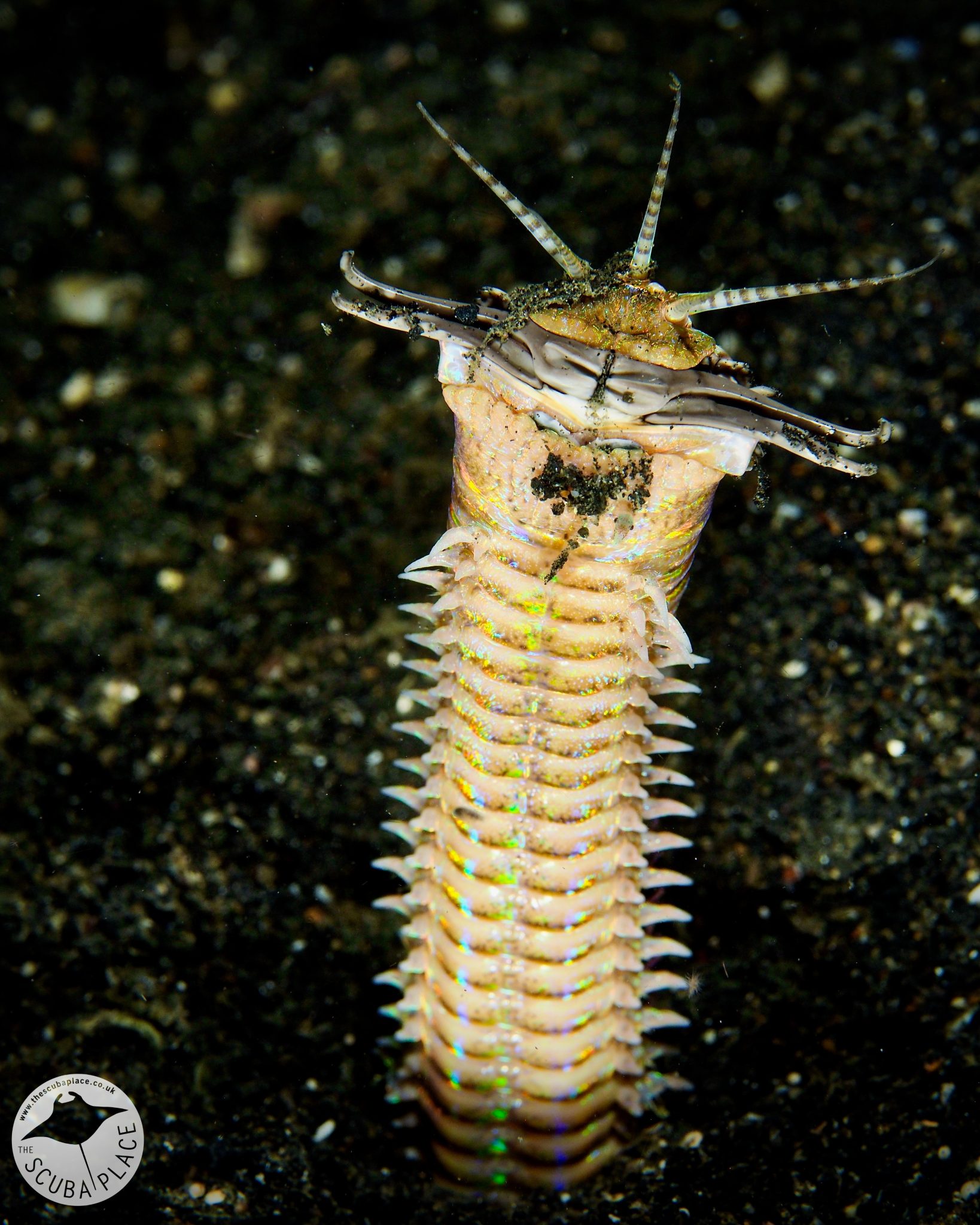
I know that there are those who like big stuff and colourful reefs, and I understand that totally – I am like that too. My first proper muck dive was a few years back in the Philippines, and I have been addicted ever since! The ‘yield’ is phenomenal in Lembeh, that being the amount of magical stuff that you see, and I would encourage everyone to give this a proper go. For photographers, macro lenses bring a little frustration at first and then great results – and using a strobe or a torch brings great colour to your photographs. For me, it doesn’t get any better, and I remain addicted to critters.
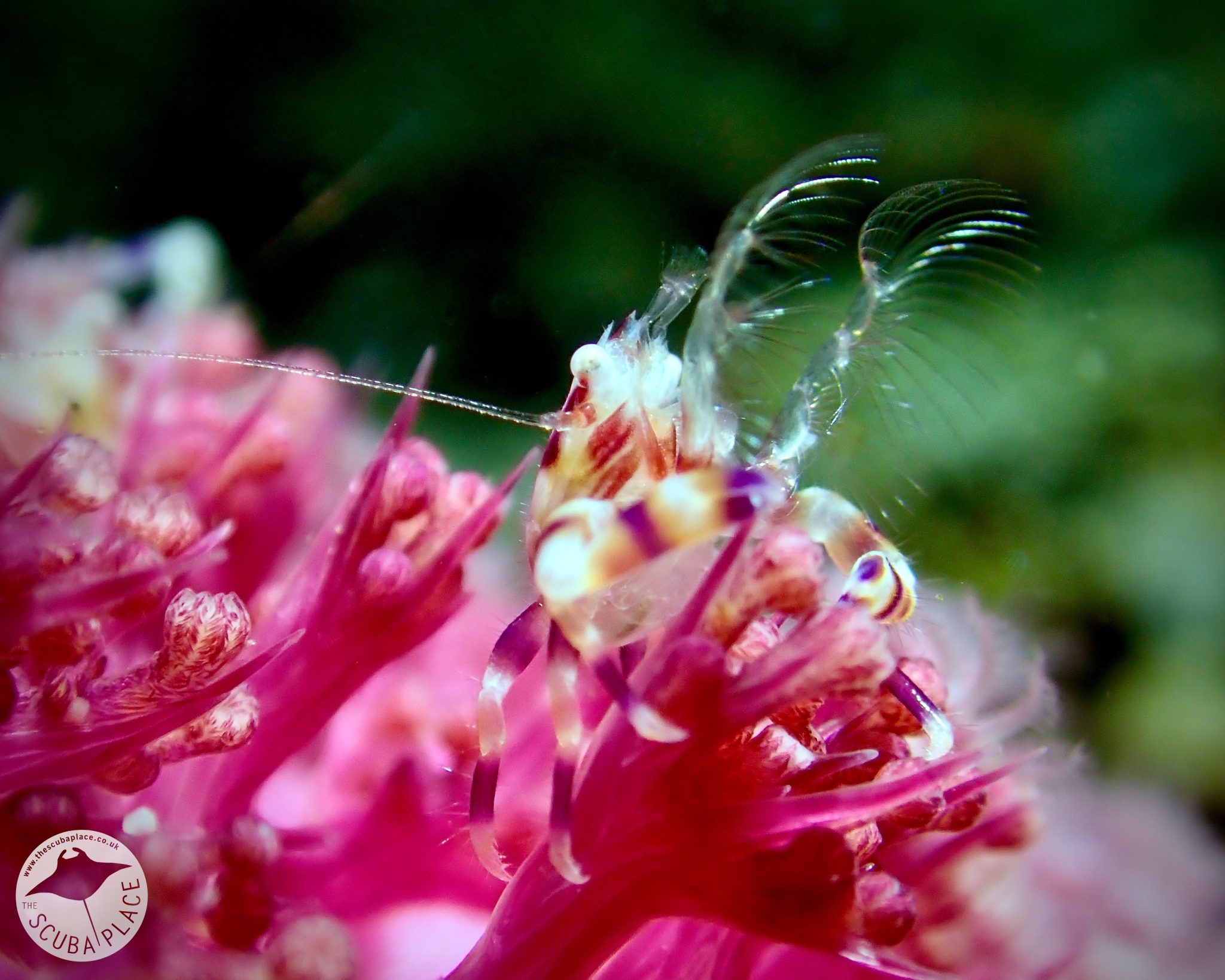
And Dive into Lembeh? I am addicted to this place too – it really is, quite simply, brilliant on all counts.
We’re heading back to Indonesia in January 2025 and will be returning to Lembeh after visiting Ambon and Triton Bay. Check out our brochure with full itinerary here. Come Dive with Us!
And our friends Anne and Phil Medcalf of Alphamarine Photography are hosting a Photography Workshop at Dive into Lembeh in August 2026. Click here for more information and drop us a line if you’re interested!
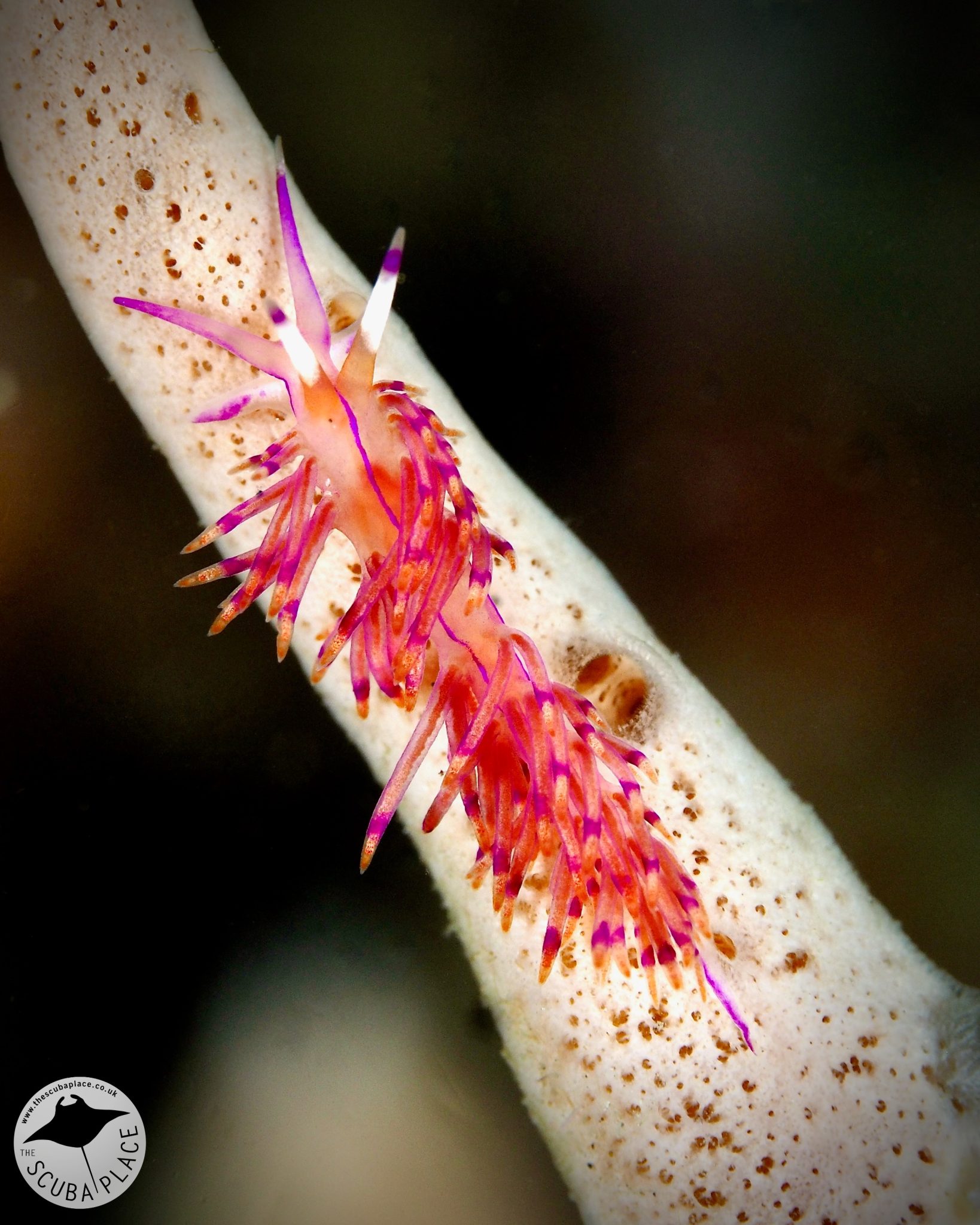
Key Facts:
- Getting there :We suggest flying with Emirates from Heathrow to Jakarta via Dubai. From Jakarta you can fly direct to Manado on Garuda Indonesia. We prefer Garuda with their free 23kg dive equipment baggage policy and the flight is 3 ½ hours. We were greeted at the airport and transported across the island in comfort.
- Air temperature : Lembeh enjoys a tropical rainforest climate – average daily temperature throughout the year is 29 to 31°C. The warmest and driest months are August and September and the wettest months are usually November and December
- Water temperature :An average of 30°C. A 1-3mm full suit or shorty will suit most.
- Visa requirement : We purchased our Visa on Arrival at the Jakarta airport for $35USD (or 500,000IDR) The visa for an initial period of 30 days. Make sure you have pristine bank notes if paying in USD or exchanged GBP when you get to Indonesia. The bills must be unmarked and undamaged to be accepted. The Customs Declaration must be completed online and the provided QR code is shown to the Customs officers.
- Currency : Indonesian Rupiah(IDR) or US Dollar are accepted most places. We exchanged Sterling for Rupiah at the Jakarta airport for an attractive rate.
- Electricity :230V with European style (round pin) two-prong plugs. Our room and the camera room had extension leads with UK plugs so no adapter was needed.
- Internet and Wi-Fi :There is wifi in resort and worked well in our room. We were able to email, WhatsApp and post on social media without issue.
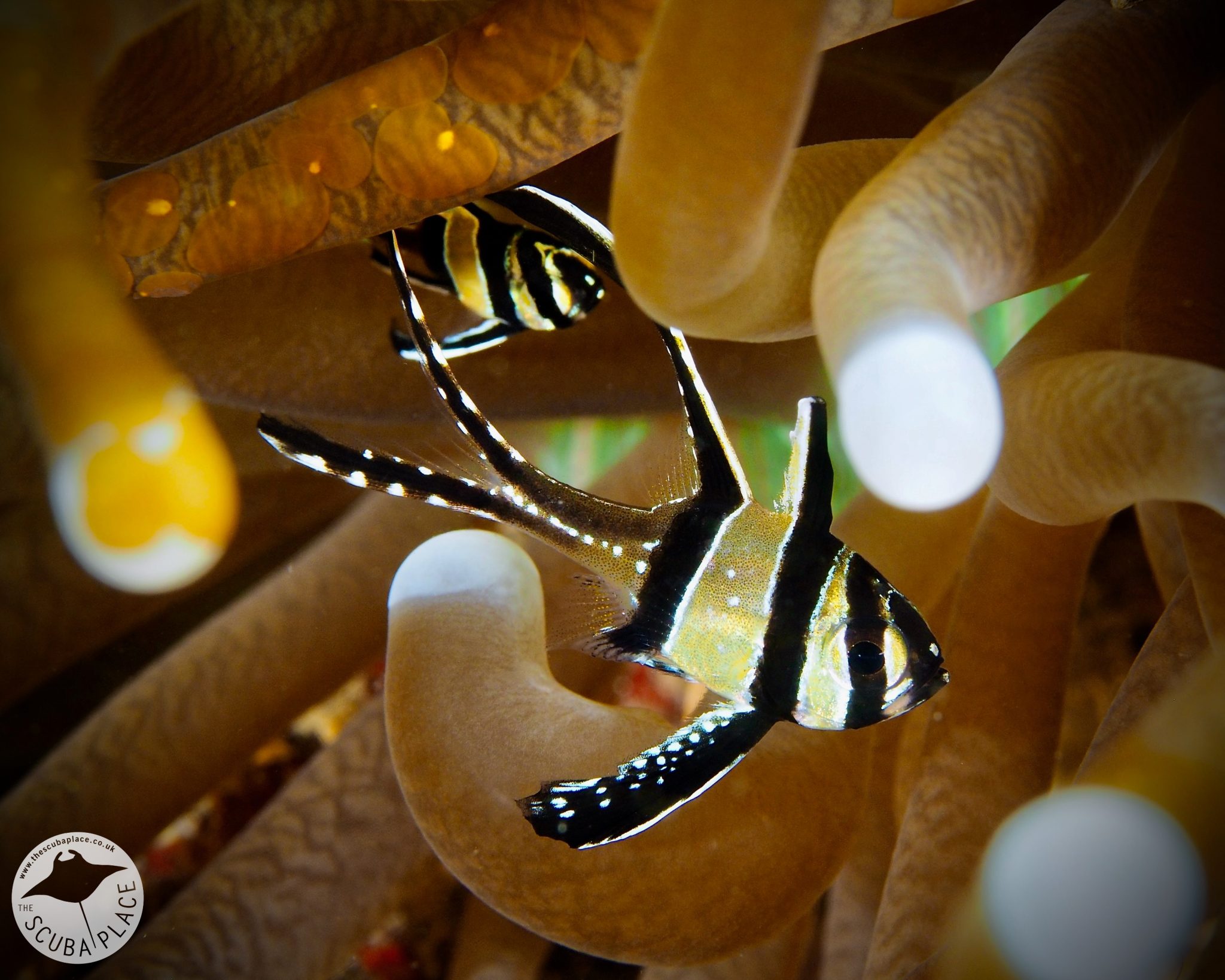
Price Guide: Expect from £2499 per person based on two sharing a long house room for 7 nights with 18 Dives – 3 boat dives and night dives are offered daily, and the house reef is available during daylight hours. Full board basis with amazing food and includes flights and transfers. Extras : Indonesian Visa on Arrival, soft drinks and adult beverages, and tips.
Our Advice: Indonesia is an amazing destination. Dive into Lembeh was the last top on our three-centre trip and we felt it was the perfect ending to an amazing holiday!
Packing tips :
- Rechargeable fan(s) :If you’ve read any of our recent trip reports we recommend these over and over again. Perfect for warm planes, stuffy transfers and still evenings. We can’t believe we travelled without them for so many years! Join the fan club and grab one off Amazon… you won’t regret it!
- Travel laundry line : We find this comes in handy for any mid holiday hand washing and definitely at the end of the trip to hang SMBs, reels, dive socks etc.
- Insect repellent :We’ve made a habit of throwing some repellent in our dive bags every trip!
Sunscreen : Don’t forget to protect yourself when you’re in the sun and on the water!!
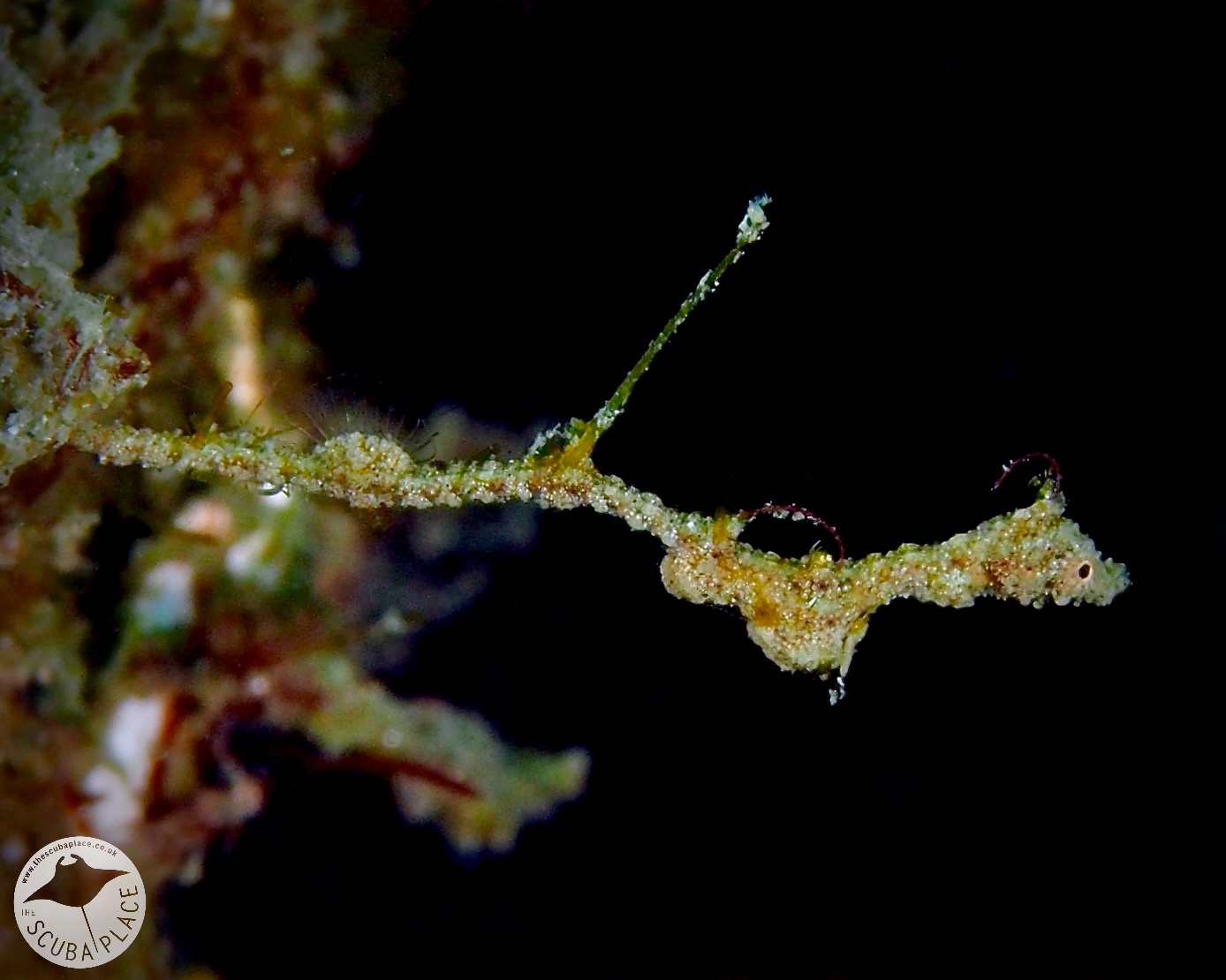
Come Dive with Us!
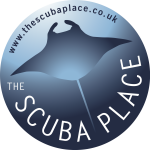 The Scuba Place designs and builds custom scuba diving holidays. With personal knowledge and experience diving in many of our destinations, there is no one better to help build your dream dive holiday. Come Dive with Us!
The Scuba Place designs and builds custom scuba diving holidays. With personal knowledge and experience diving in many of our destinations, there is no one better to help build your dream dive holiday. Come Dive with Us!
Call us at 020 3515 9955 or email at reservations@thescubaplace.co.uk
Find us at https://www.thescubaplace.co.uk
Facebook : https://www.facebook.com/thescubaplace
Instagram : https://www.instagram.com/the.scuba.place/
YouTube : https://www.youtube.com/channel/UCH684OdioYirI-zzdT58Ceg
Blogs
TRAVEL BLOG: Jeff Goodman Dives SOMABAY, Part 3

Today we are diving one of the outer reefs from an inflatable. As we reach the bottom, a reef octopus eases its way into the cover of a small crack in the coral while displaying it’s incredible ability to change colour. They are arguably one of the most charismatic of reef dwellers and it is always exciting for me to simply hover and watch. I would have spent longer and waited for it to come and investigate me, but as dive time is limited we wanted to move on and find a turtle.
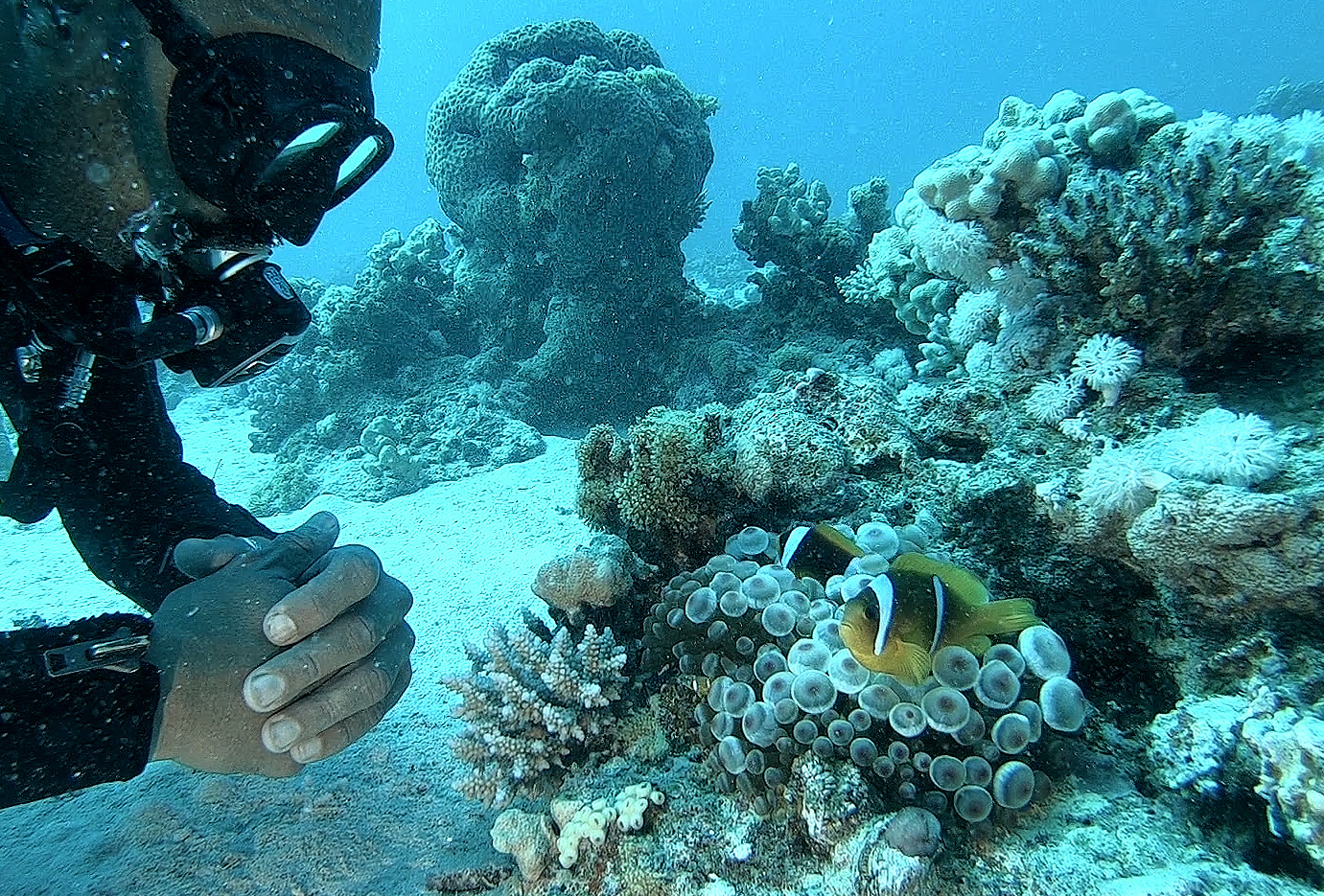
The waters around Somabay are well protected and hold a rich variety of marine life. The reef edges are thriving colonies of coral and shoaling fish, while nearer the sea bed plenty of wildlife is still to be found.
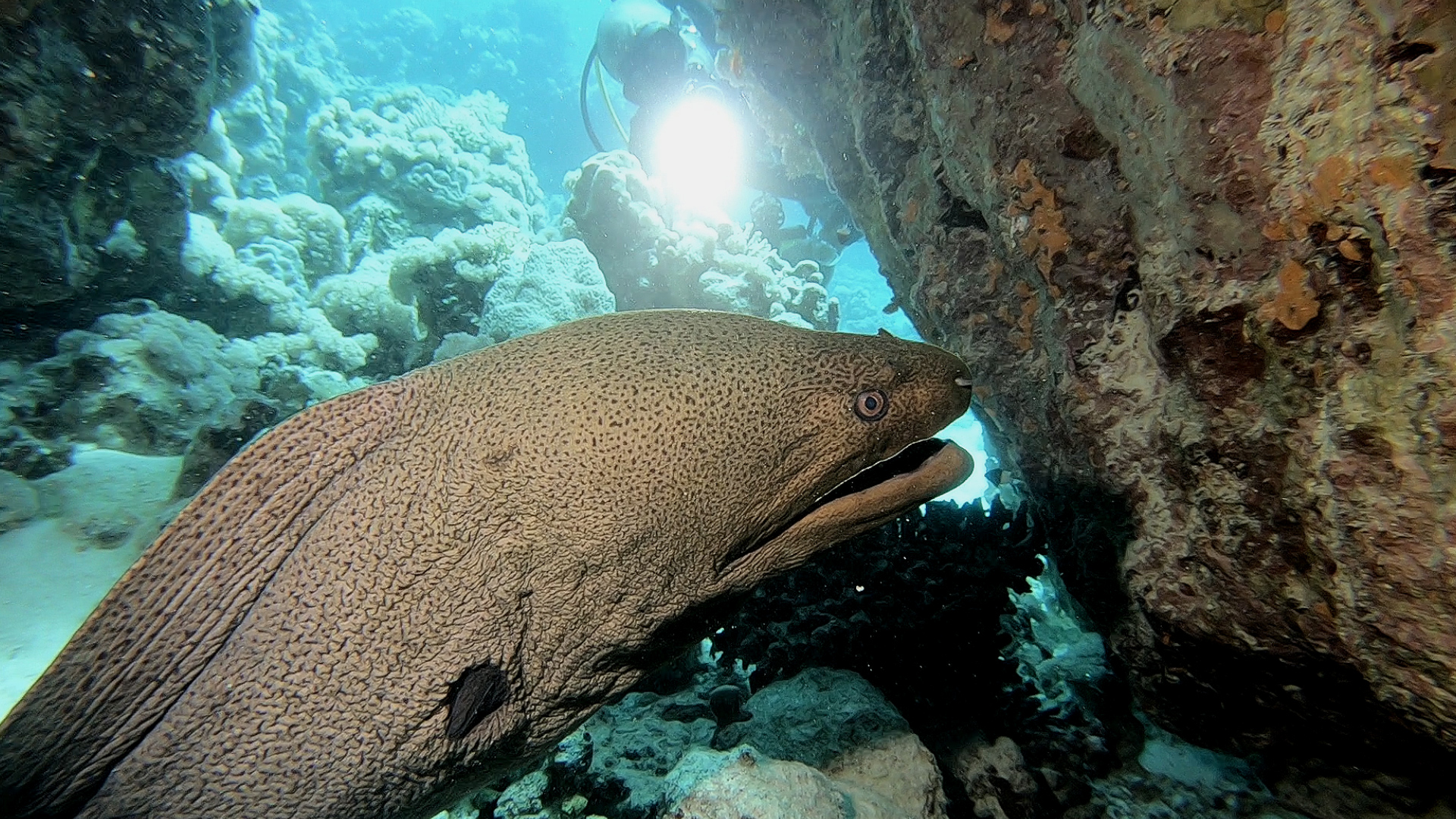
Then we located the turtles. They are very used to divers and so show little concern when slowly approached. In fact occasionally one will come over to see what you are doing. There is always huge excitement when diving with a turtle. The shear thrill of sharing a moment with another species.
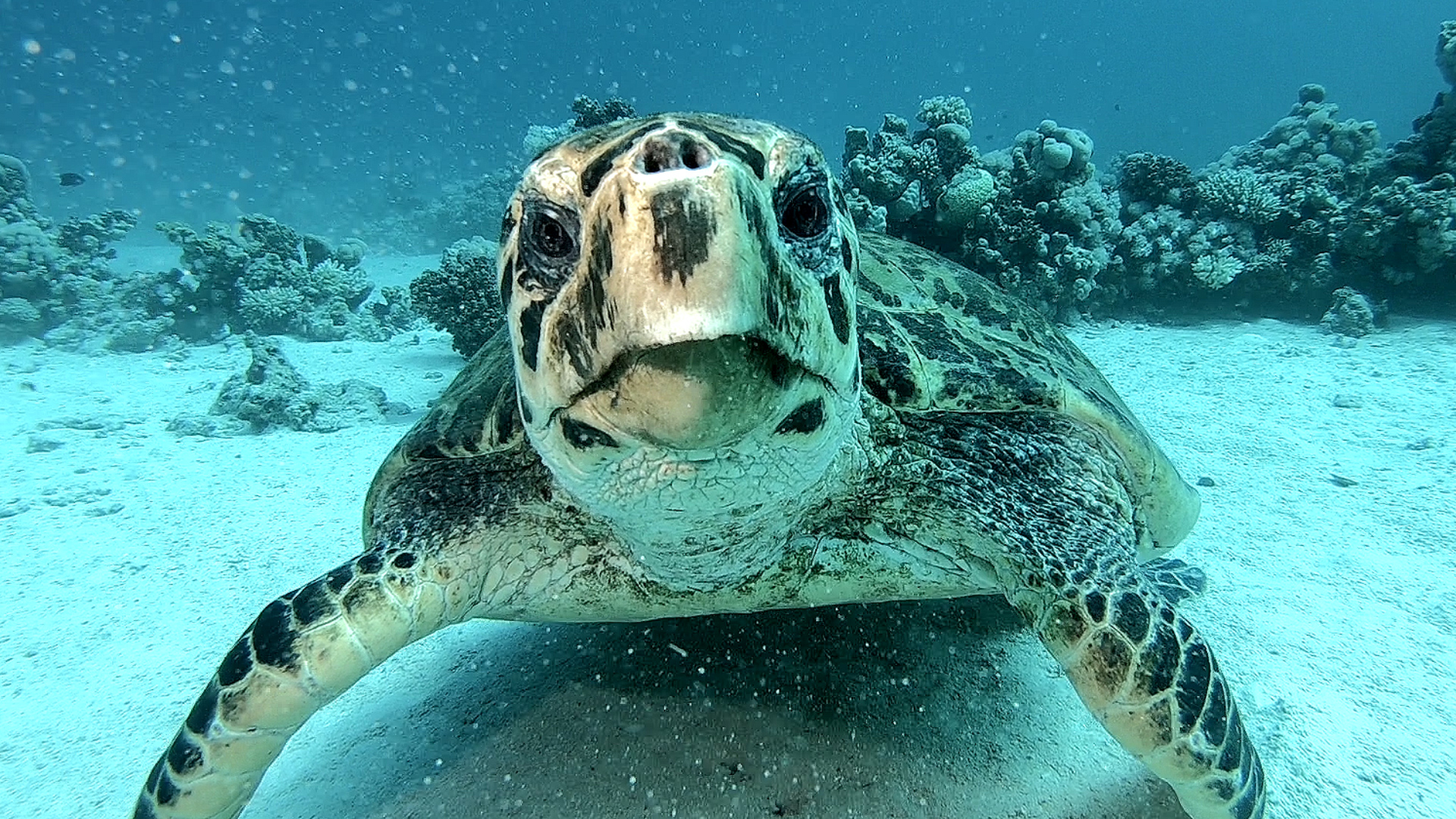
What a fantastic way to finish a wonderful few days diving and I would like to thank SOMABAY, ORCA DIVING and THE BREAKERS for making my stay such a good one.
I had a great time, with diving everyday either on the house reef or on one of the offshore reefs by inflatable or larger day boat. Orca diving provided high quality equipment and facilities while the staff were all very friendly and welcoming. The Breakers was right on the coast with nice rooms, good food and once again friendly staff making the whole trip a real pleasure.
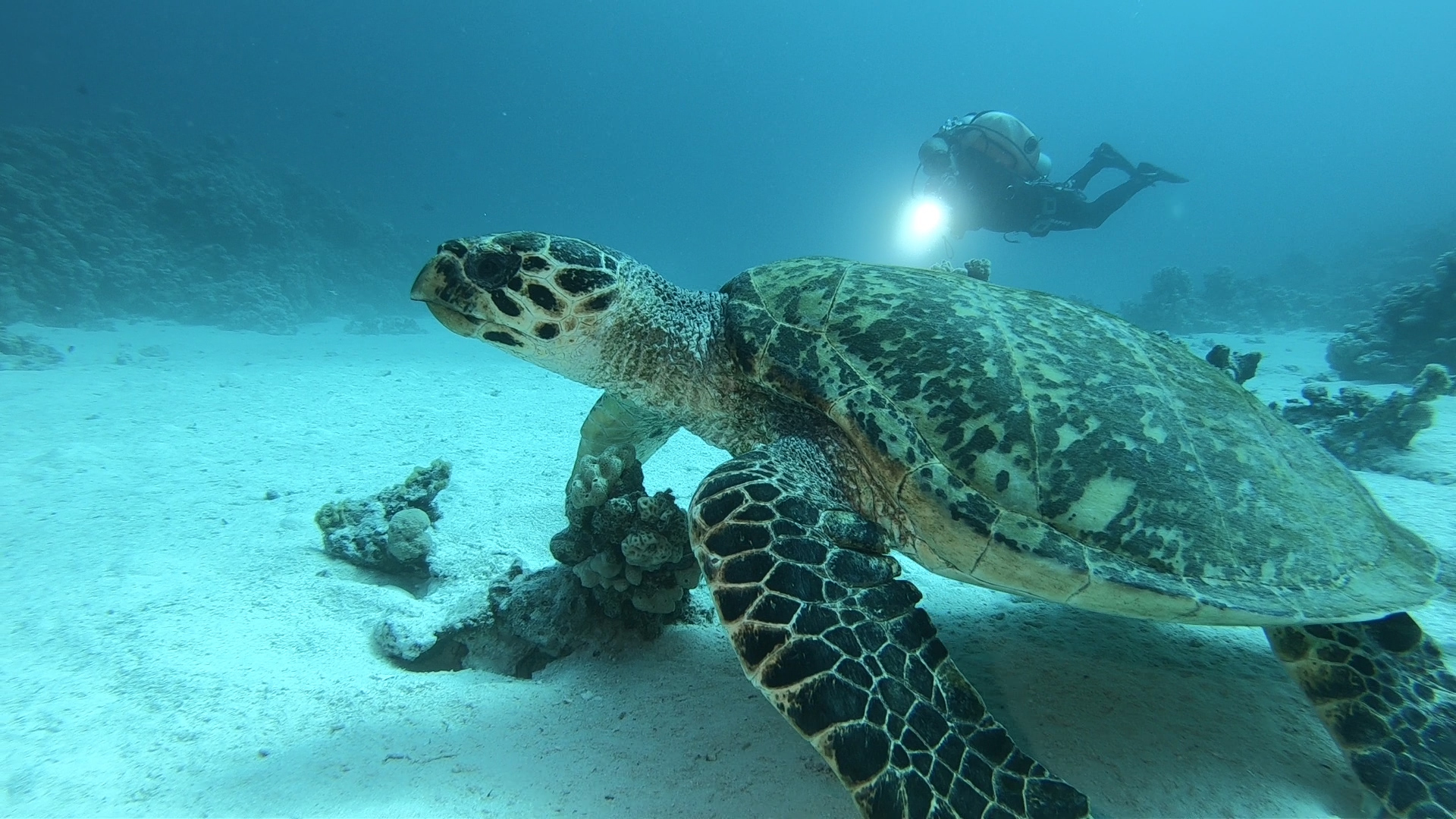
Soma Bay covers an entire peninsula and is home to several resorts as well as residential compounds.
As well as scuba diving, Somabay caters for many other sports and activities, and so is perfect for families as well as individuals and/or groups. And of course there is always time to lay peacefully on the beach under the Egyptian sun.
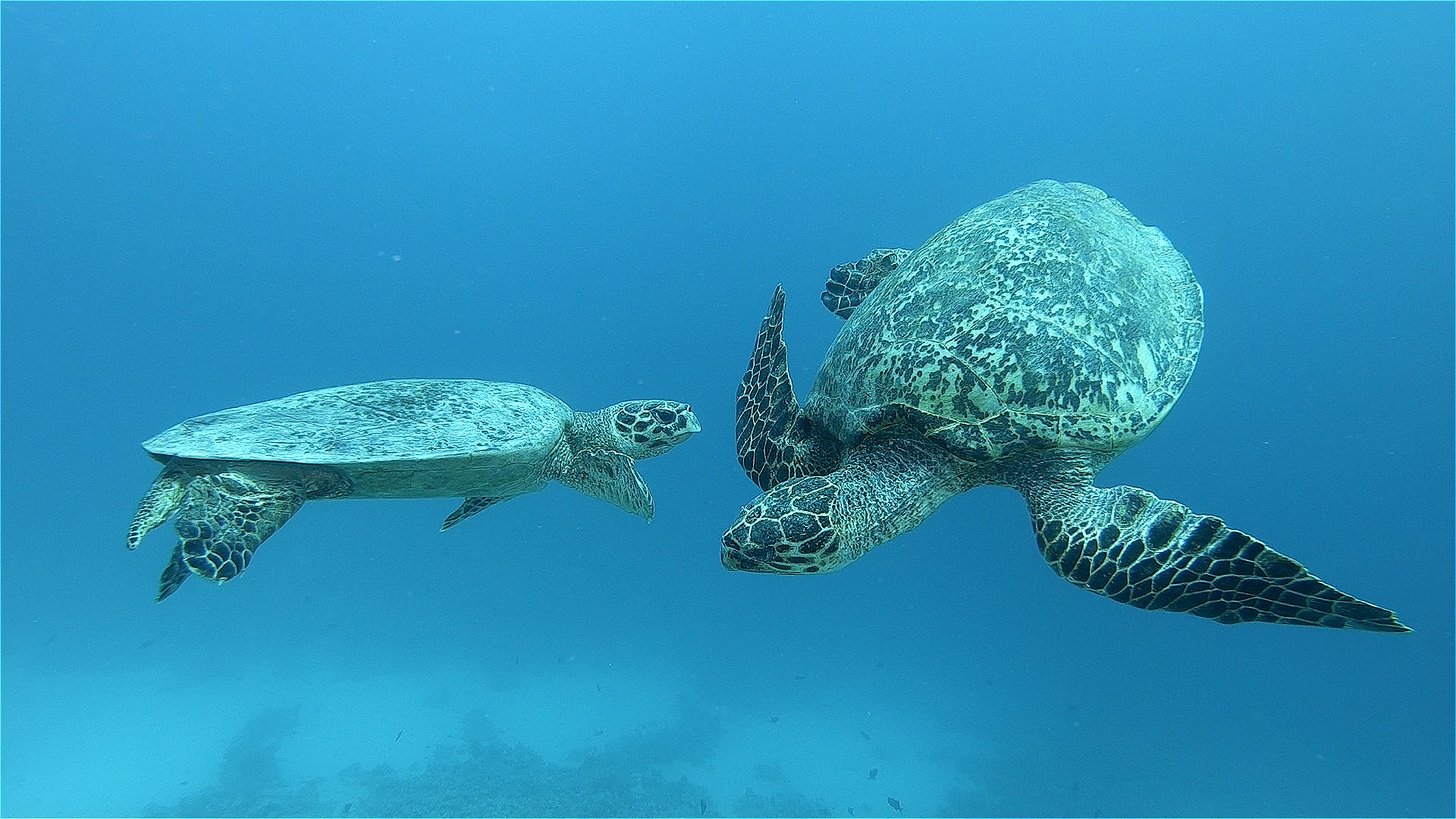
Book your next Red Sea dive adventure with SOMABAY! For more information, visit www.somabay.com.
Stay at the Breakers Diving & Surfing Lodge when you visit! For more information, visit www.thebreakers-somabay.com.
Find out more about ORCA Dive Clubs at SOMABAY at www.orca-diveclubs.com/en/soma-bay-en.
-

 News3 months ago
News3 months agoHone your underwater photography skills with Alphamarine Photography at Red Sea Diving Safari in March
-

 News2 months ago
News2 months agoCapturing Critters in Lembeh Underwater Photography Workshop 2024: Event Roundup
-

 Marine Life & Conservation Blogs2 months ago
Marine Life & Conservation Blogs2 months agoCreature Feature: Swell Sharks
-

 Blogs1 month ago
Blogs1 month agoMurex Resorts: Passport to Paradise!
-

 Gear News3 months ago
Gear News3 months agoBare X-Mission Drysuit: Ideal for Both Technical and Recreational Divers
-

 Blogs2 months ago
Blogs2 months agoDiver Discovering Whale Skeletons Beneath Ice Judged World’s Best Underwater Photograph
-

 Gear Reviews2 months ago
Gear Reviews2 months agoGear Review: Oceanic+ Dive Housing for iPhone
-

 Marine Life & Conservation2 months ago
Marine Life & Conservation2 months agoSave the Manatee Club launches brand new webcams at Silver Springs State Park, Florida









